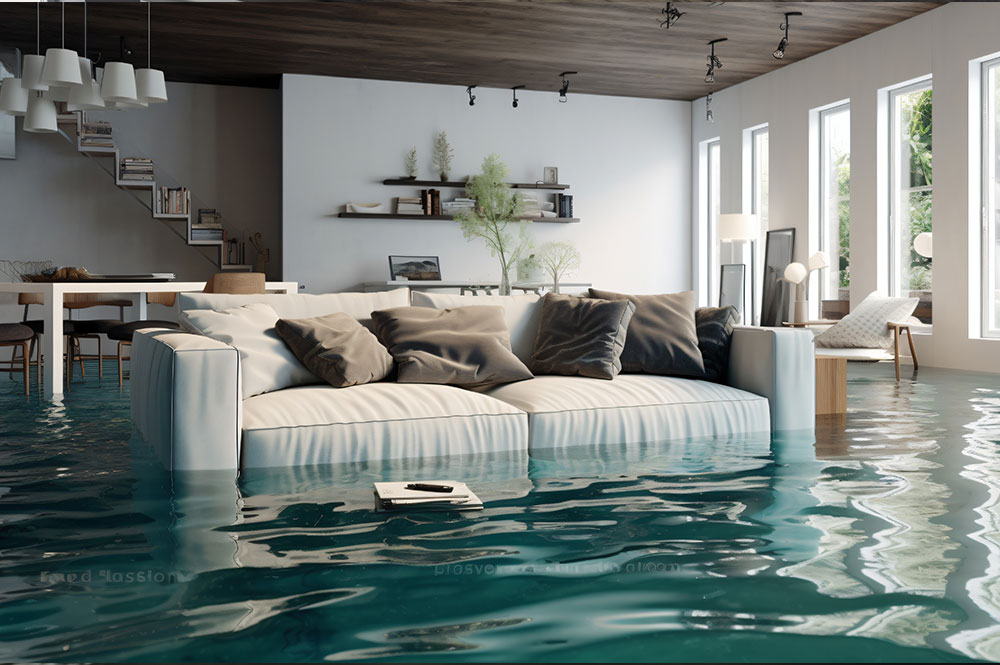Flood-Damaged Furniture
Dealing with flood-damaged furniture? In the wake of recent flooding in Illawarra, many homeowners have been left to face the challenging task of cleaning up and restoring their properties. Among the most pressing concerns is determining which pieces of water-damaged furniture can be saved and which must be replaced. As experts in rubbish removal, we understand the complexities involved in making these decisions and are here to offer guidance on assessing the salvageability of flooded furniture, as well as responsible disposal options for items that cannot be restored.

Initial Assessment
Safety First
Before attempting to salvage any flood-damaged furniture, it’s crucial to prioritise safety. Always wear protective gear such as gloves, masks, and sturdy boots when handling water-damaged items to protect against contaminants. Electrical items should be unplugged and checked by a professional before use to avoid electrical hazards.
Identifying Types of Damage
Water damage is categorised by the source of the water:
- Clean Water (Category 1): From sanitary sources and poses no substantial risk from dermal, ingestion, or inhalation exposure. Though initially safe, it can become increasingly contaminated if not dealt with quickly.
- Grey Water (Category 2): Contains significant contamination and has the potential to cause discomfort or sickness if contacted or consumed by humans. It includes water from dishwasher or washing machine overflows.
- Black Water (Category 3): Highly contaminated, containing pathogenic, toxigenic, or other harmful agents. Typical sources include sewer backup or overflow flood waters.
Knowing the type of water involved can help you assess the potential for successful restoration or the necessity for disposal.
Evaluating Different Materials
Wood Furniture
Wood is porous and absorbs water, which can lead to swelling, warping, and weakening of the structure. Inspect for these signs:
- Swelling or Warping: Check if doors or drawers no longer fit their frames.
- Discolouration: Look for stains or changes in colour that may indicate damage beyond surface level.
- Structural Integrity: Gently test to see if the piece wobbles or feels unstable.
Upholstered Furniture
Upholstered items pose a challenge due to their absorption of water, which can lead to internal mould and bacteria growth:
- Smell Test: A musty or mildew-like smell often indicates that the furniture is retaining moisture internally, which can be difficult to fully dry out.
- Feel for Dampness: Check the padding and cushions to see if they feel wet or damp beneath the surface.
Metal and Other Materials
Metal may rust or corrode after being in contact with water, especially if not dried quickly. Plastic and glass are more resilient but check for any structural damage or weakness.
DIY Inspection Techniques
Visual Inspection
Start the evaluation of your flood-damaged furniture with a thorough visual inspection. Look carefully for obvious signs of damage such as swelling, discolouration, or warping of the wood. These symptoms indicate that the water has penetrated the surface and may have compromised the structural integrity of the furniture.
Pay special attention to joints and connections, as these are often the first areas to fail when exposed to moisture. Document these issues with photographs to assess the progression or improvement over time during the drying process.
Smell Test
The presence of odours can serve as a critical indicator of mould and mildew growth within furniture. Conduct a smell test by sniffing at various parts of the furniture, especially those areas that are more likely to retain moisture such as upholstery and cushioning.
A persistent musty smell suggests that there may be mould or mildew developing inside or beneath the surface, which can pose health risks and further damage the furniture. Early detection of these smells is vital for taking timely action to mitigate additional damage.
Structural Integrity Tests
Assess the furniture’s structural integrity by applying gentle pressure to different parts to test its stability and sturdiness. Focus on areas that bear weight or are structurally crucial, such as legs on chairs and tables, or the frames on sofas and armchairs.
If the furniture deforms easily, feels unusually soft, or shows signs of loosening at the joints, it is likely that the water has weakened its structure significantly. Furniture that feels unstable or extremely weak may not be safe to use and could be beyond repair, necessitating disposal.

When to Call a Professional
Expert Assessment
When in doubt, consulting with a restoration professional can provide clarity on the feasibility of saving a piece. They can also assess potential hidden damage that you may not be equipped to handle.
Cost Considerations
Compare the cost of restoration versus replacement. In some cases, professional restoration may be more costly than purchasing new items, particularly if structural damage is extensive.
Making the Decision to Restore or Replace
Emotional and Financial Value
Consider the sentimental and financial value of the furniture. Family heirlooms or expensive pieces may warrant the extra effort and expense of restoration.
Environmental Impact
Consider the environmental impact of disposing of furniture. Restoration can be a more sustainable option than replacement.
Responsible Disposal of Unsalvageable Furniture
If furniture cannot be saved, responsible disposal is key. Our furniture removal service offers an efficient way to dispose of irreparable furniture. We collect damaged items and ensure they are disposed of properly, including recycling materials where possible, to minimise environmental impact. Trust us to help keep your home safe and clutter-free.
Conclusion
Assessing flood-damaged furniture can be complex, but with the right approach, many items can be restored to their former glory. For those that cannot, remember that disposing of them responsibly is just as important.
